Exploring Marsupials in Australia : 10-Day Trip
- Sonam Shah
- May 29
- 6 min read
Australia’s unique ecosystem, shaped by millions of years of isolation, hosts over 70% of the world’s marsupials, making it an unparalleled destination for wildlife enthusiasts. This 10-day itinerary, designed without visiting zoos, focuses on national parks and reserves across New South Wales (NSW), Tasmania, and South Australia, where you can observe kangaroos, koalas, wallabies, wombats, and Tasmanian devils in their natural habitats. The plan accounts for travel times, ensuring a feasible and immersive experience, starting from Sydney and covering key regions with domestic flights and drives.
Why Australia for Marsupials?
Marsupials, characterized by their pouches for carrying young, are a defining feature of Australia’s fauna. Over 84% of the country’s mammals are endemic, with marsupials like kangaroos, koalas, and Tasmanian devils thriving in diverse environments from eucalyptus forests to rugged mountains. This itinerary leverages national parks, where these animals roam freely, offering authentic wildlife encounters without captive settings.
How to Reach Key Locations
International Access: Fly into Sydney Kingsford Smith Airport (SYD) with airlines like Qantas, Emirates, or Singapore Airlines from major hubs like London, Dubai, or Los Angeles .
Domestic Travel: Use domestic flights for Sydney to Launceston (1.5 hours, Qantas, Jetstar), Launceston to Adelaide (1.5 hours), and Adelaide to Kangaroo Island (25 minutes, Regional Express Airlines). Ferries to Kangaroo Island take 2 hours .
Local Travel: Rent a car for drives in NSW (e.g., Sydney to Southern Highlands, 1.5 hours) and Tasmania (e.g., Launceston to Cradle Mountain, 1.5 hours, Hertz Australia). Roads are well-maintained, but watch for wildlife at dusk.
Best Time to Visit
NSW (Sydney, Southern Highlands, South Coast): Spring (September–November) for mild weather (15–25°C) and active wildlife. Autumn (March–May) is also suitable, with fewer crowds.
Tasmania: Summer (December–February) for pleasant weather (15–25°C), though spring is cooler and less crowded. Tasmanian devils are more active in cooler months.
Kangaroo Island: Spring (September–November) for wildflowers and active marsupials (15–20°C). Summer is warmer but busier, with temperatures reaching 30°C.
Itinerary Details
The itinerary is structured to balance wildlife viewing with travel logistics, ensuring you see a variety of marsupials across different regions. Below is a day-by-day breakdown, including activities, travel times, and accommodations.

Day 1: Arrive in Sydney
Activities: Arrive at Sydney Kingsford Smith Airport (SYD), accessible via international flights from major hubs like London, Dubai, or Los Angeles with airlines like Qantas, Emirates, or Singapore Airlines . Check into your accommodation and rest after your journey.
Accommodation: Options include Four Seasons Sydney (luxury, ~$300–$600/night) or The Langham Sydney (mid-range, ~$150–$300/night).
Note: No wildlife viewing today; focus on settling in and preparing for the adventure.

Day 2: Guula Ngurra National Park (Southern Highlands)
Morning: Drive from Sydney to Guula Ngurra National Park (1.5 hours via M5 and M31). This park, meaning “Koala Country” in the local Indigenous language, is ideal for spotting wild koalas in eucalyptus trees .
Afternoon: Follow the 3km Mount Penang Loop Walk, using binoculars to enhance your chances of seeing koalas. Early morning or late afternoon is best for activity.
Evening: Return to Sydney (1.5 hours).
Accommodation: Same as Day 1.
Wildlife Highlight: Koalas, often seen lounging in trees, offering a glimpse into their arboreal lifestyle.
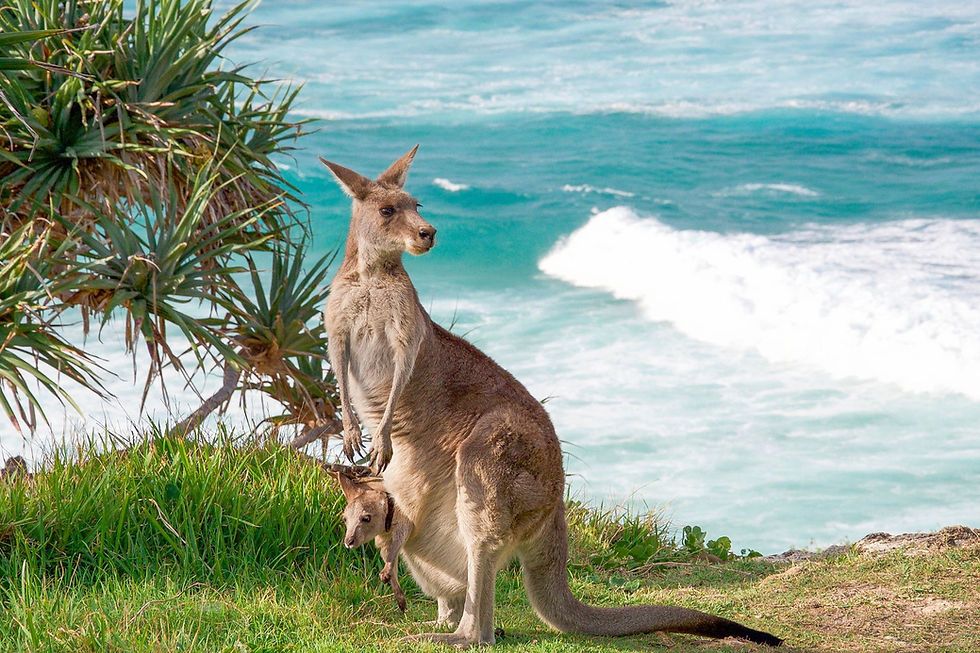
Day 3: Drive to South Coast NSW
Morning: Depart Sydney and drive to Batemans Bay (3-4 hours via Princes Highway). Check into your accommodation.
Afternoon: Visit Pebbly Beach in Murramarang National Park, known for its large population of eastern grey kangaroos, often grazing along the beach and bushland .
Evening: Relax at your accommodation in Batemans Bay.
Accommodation: Batemans Bay Beachside Holiday Park (budget, ~$80–$150/night) or Oyster Cove Holiday Park (mid-range, ~$100–$200/night).
Wildlife Highlight: Kangaroos, frequently seen in open areas, providing excellent photo opportunities.

Day 4: Booderee National Park (Jervis Bay)
Morning: Drive from Batemans Bay to Booderee National Park (1 hour via Princes Highway). Located in Jervis Bay, this park is another hotspot for kangaroo sightings.
Afternoon: Explore Caves Beach or Greenfield Beach, where eastern grey kangaroos are often seen. Take short walks along the park’s trails for a chance to spot wallabies or other small marsupials .
Evening: Drive back to Sydney (4-5 hours) or stay overnight near Jervis Bay if preferred.
Accommodation: Return to Sydney accommodation or Jervis Bay Holiday Park (if staying, ~$80–$150/night).
Wildlife Highlight: Kangaroos and possibly wallabies, enhancing your marsupial diversity.
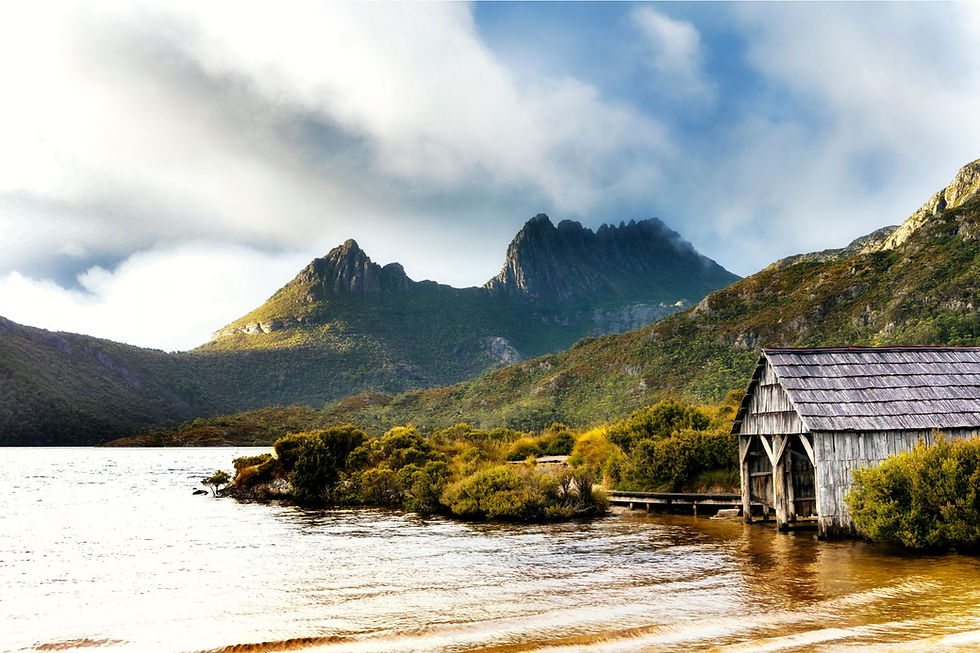
Day 5: Fly to Launceston, Drive to Cradle Mountain (Tasmania)
Morning: Early flight from Sydney to Launceston (1.5 hours, airlines like Qantas or Jetstar, Qantas, Jetstar). Rent a car upon arrival.
Afternoon: Drive from Launceston to Cradle Mountain-Lake St Clair National Park (1.5 hours via A10). Check into your accommodation and relax.
Evening: Prepare for wildlife spotting, possibly joining a guided night walk if available.
Accommodation: Cradle Mountain Lodge (luxury, ~$200–$400/night) or Walhalla Pines Wilderness Retreat (mid-range, ~$100–$200/night).
Note: No wildlife viewing today; focus on travel and settling in.

Days 6-7: Cradle Mountain-Lake St Clair National Park
Day 6:
Morning: Join a guided walk or tour in the park. Early morning is ideal for spotting wombats, which are common in grassy areas. Look for Tasmanian devils during guided night walks (book in advance, Cradle Mountain-Lake St Clair National Park).
Afternoon: Explore trails like the Dove Lake Circuit or Enchanted Walk, keeping an eye out for platypus in streams.
Day 7:
Morning: Continue exploring, focusing on Ronny Creek for wombats and other wildlife.
Afternoon: Relax or take a short hike before driving back to Launceston (1.5 hours).
Accommodation: Same as Day 5.
Wildlife Highlight: Wombats, Tasmanian devils (with guided tours), and possibly platypus, offering a glimpse into Tasmania’s unique ecosystem.

Day 8: Fly to Adelaide, Then to Kangaroo Island
Morning: Early drive from Cradle Mountain to Launceston (1.5 hours). Fly from Launceston to Adelaide (1.5 hours, airlines like Qantas or Jetstar).
Afternoon: Take a short flight (25 minutes) or ferry (2 hours) from Adelaide to Kangaroo Island . Check into your accommodation.
Evening: Relax and prepare for wildlife exploration.
Accommodation: Southern Ocean Lodge (luxury, ~$1,000–$2,000/night) or Emu Bay Holiday Park (budget, ~$80–$150/night).
Note: No wildlife viewing today; focus on travel.
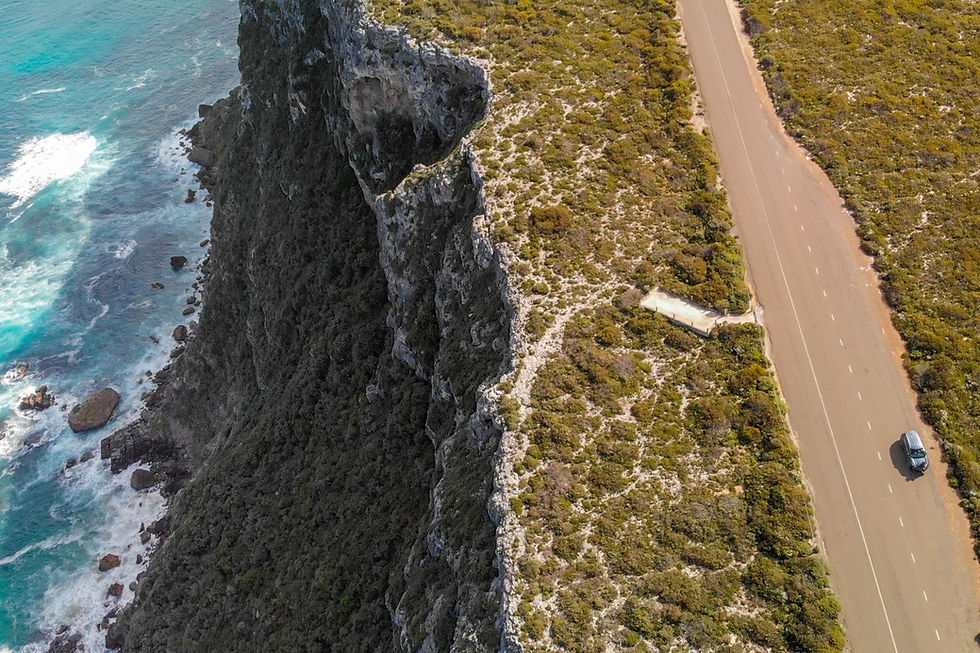
Days 9-10: Kangaroo Island
Day 9:
Morning: Visit Flinders Chase National Park. Explore Remarkable Rocks and Admirals Arch while looking for kangaroos, wallabies, and koalas .
Afternoon: Head to Seal Bay Conservation Park for Australian sea lions and nearby kangaroo sightings.
Day 10:
Morning: Optional visit to Stokes Bay at dusk (if staying late) for little penguins, or explore more of the island’s wildlife.
Afternoon: Return to Adelaide via flight or ferry. Connect to your onward flight from Adelaide, possibly to Sydney for international connections.
Wildlife Highlight: Kangaroos, wallabies, koalas, and sea lions, showcasing Kangaroo Island’s high wildlife density.
Best Places to Stay
The following accommodation options near each location have been categorized by luxury and mid-range, to suit various preferences.
Sydney
Luxury

Four Seasons Sydney
Prime location with harbour views.
$300–$600

The Langham Sydney
Elegant rooms, central location.
$300–$600
Mid-Range
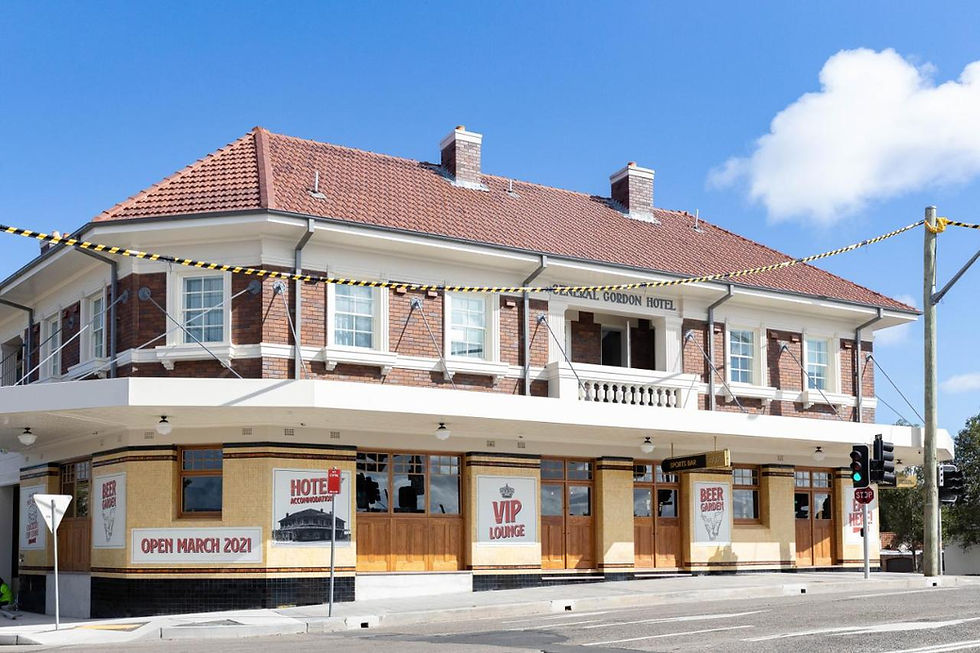
The General Gordon
Comfortable rooms. Convenient location.
$110–$150
Batemans Bay, NSW (Mid-Range)

Lincoln Downs Resort Batemans Bay
Private lake and manicured gardens.
Ideal location.
$110–$150
Cradle Mountain, Tasmania
Luxury

Peppers Cradle Mountain Lodge
Rustic luxury, near trails.
$200–$400
Mid-Range

Discovery Parks - Cradle Mountain
Cozy cottages with cooking facilities.
Immersive nature
$130–$180
Kangaroo Island
Luxury

CABN Kangaroo Island
Beachfront location, exceptional facilities
Comfortable accommodation
$350–$400
Mid-Range
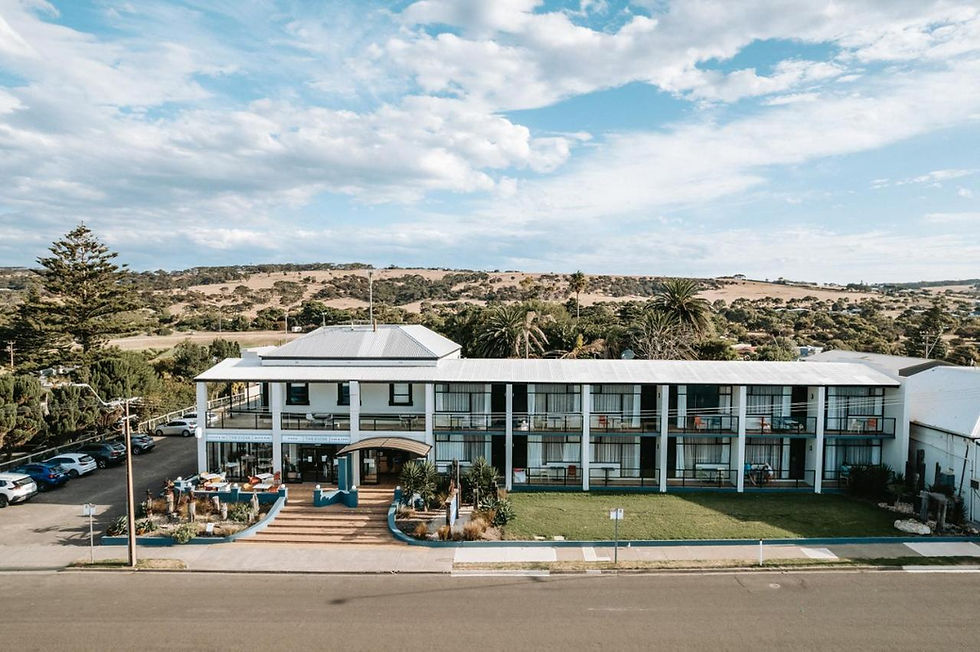
Seafront Hotel Kangaroo Island
Comfortable rooms, convenient location
$140–$200
Things to Keep in Mind
To ensure a smooth and respectful wildlife experience, consider the following:
Advance Booking: Popular destinations like Kangaroo Island and Cradle Mountain fill up quickly, especially in spring and summer. Book accommodations, flights, and guided tours 3–6 months in advance.
Wildlife Etiquette: Maintain a safe distance from animals, avoid feeding them, and follow park guidelines. Tasmanian devils are nocturnal, so guided night walks are ideal for sightings.
Weather: Pack layers for Tasmania’s cooler climate (5–25°C) and waterproof gear for rain. On Kangaroo Island and NSW, use sunscreen and hats for sun protection (15–30°C).
Health Precautions: No specific vaccinations are required, but carry insect repellent and stay hydrated, especially in summer. Check for ticks after bush walks, particularly in Tasmania.
Photography: Bring binoculars and a camera with a telephoto lens (200mm or higher) for wildlife shots. Avoid flash to prevent startling animals.
Connectivity: Wi-Fi is available at most hotels, but mobile signals may be weak in remote areas like Cradle Mountain. Carry a portable charger for extended outings.
Conservation: Respect park rules, stay on designated trails, and support conservation efforts by minimizing your environmental impact, such as reducing single-use plastics.
Traveler Tips
Enhance your experience with these practical tips:
Maximize Sightings: Early morning and late afternoon are the best times for wildlife viewing, as marsupials are most active during these periods. Join guided walks in Cradle Mountain for Tasmanian devils and wombats.
Car Rentals: Rent a car in Launceston for Tasmania and on Kangaroo Island for flexibility . Roads are well-maintained, but watch for wildlife at dusk, especially kangaroos.
Guided Tours: Consider joining Indigenous-led eco-tours on Kangaroo Island or guided walks in Tasmania for cultural insights and better wildlife spotting.
Local Cuisine: Try Australian specialties like seafood in NSW or Tasmanian scallops in Hobart for a cultural experience, enhancing your trip’s immersion.
Tipping: Tipping is not mandatory but appreciated; consider $5–$10 for guides and similar tips for hotel staff based on service quality.






Comments